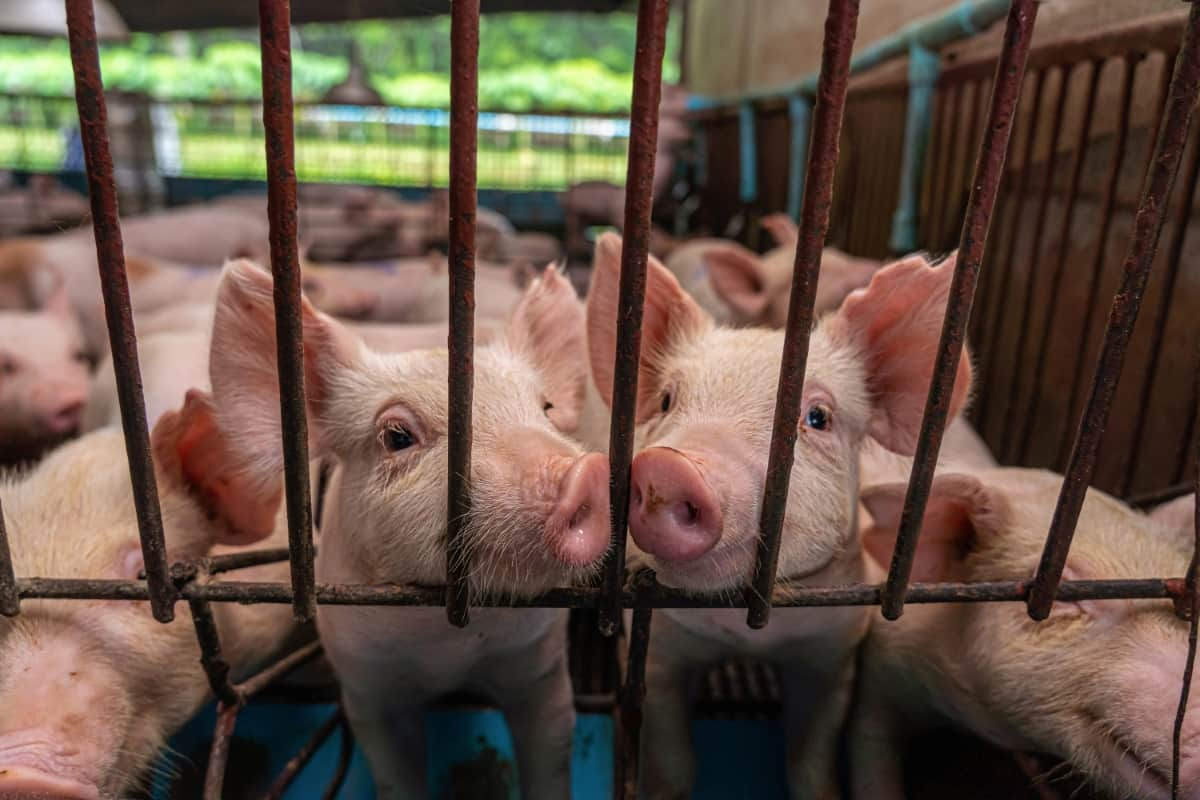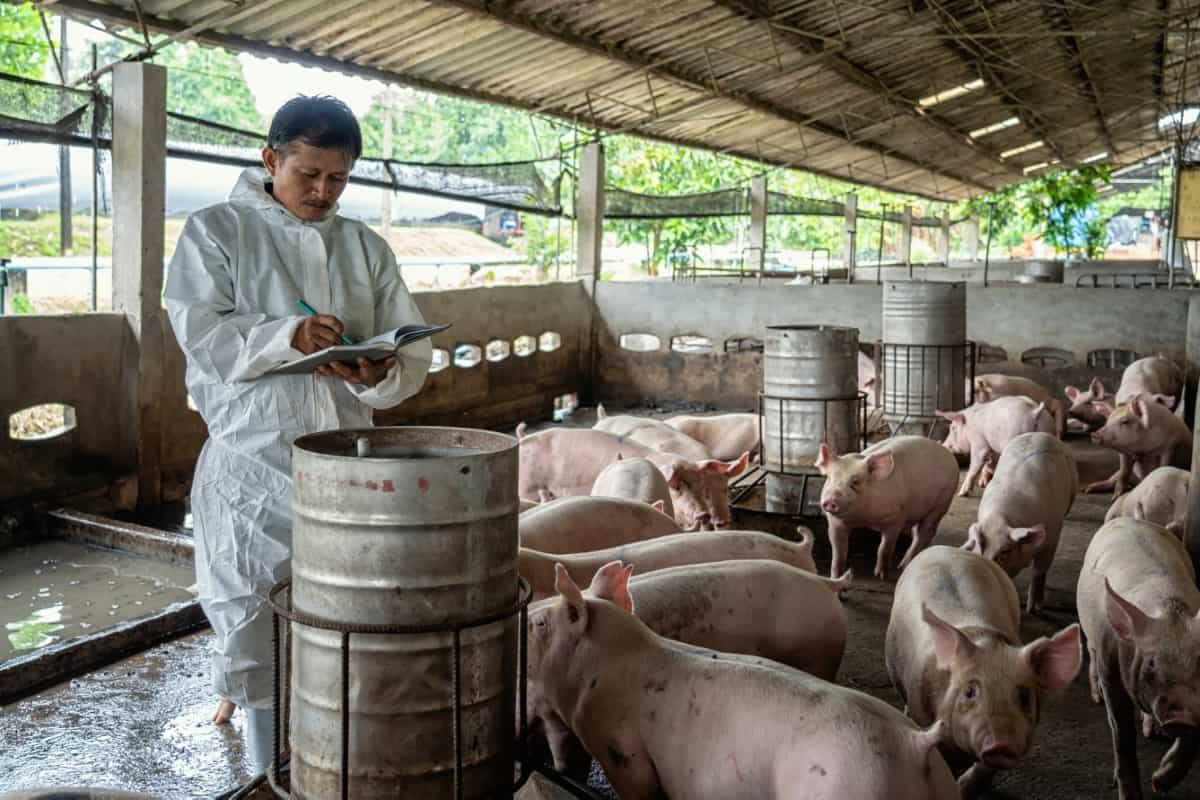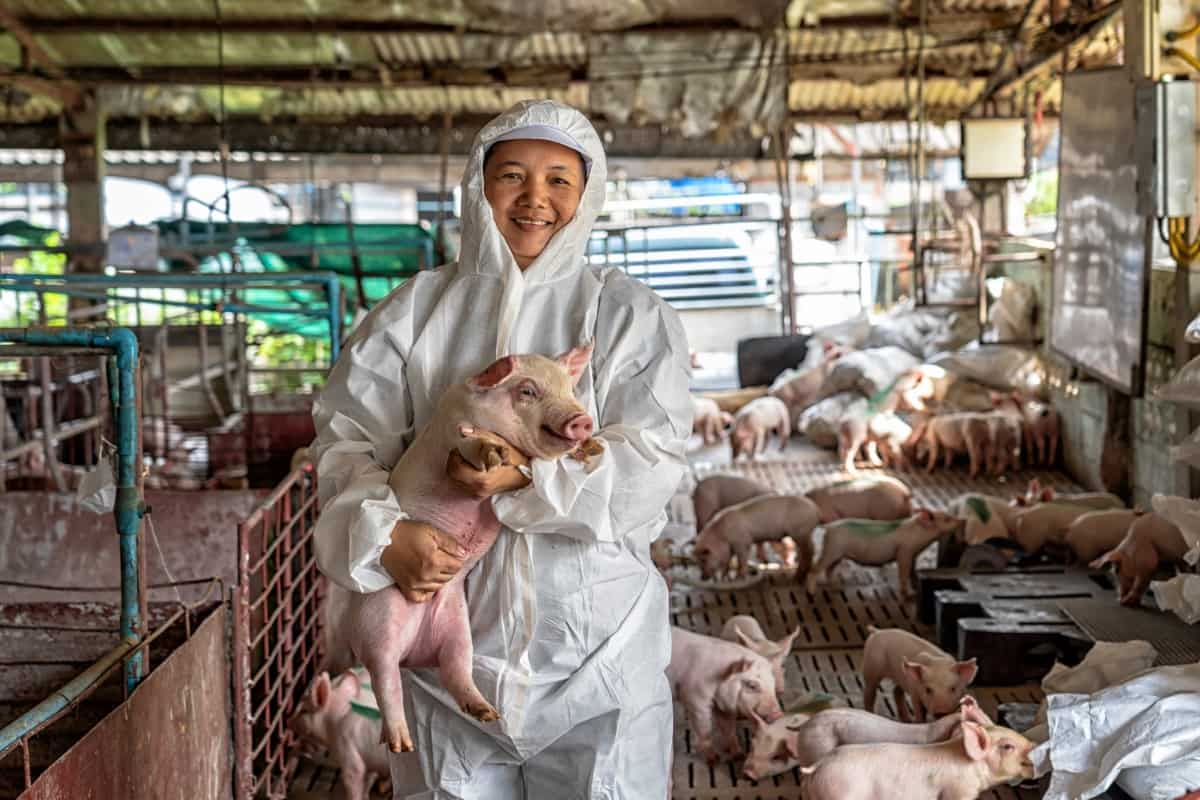Australia’s pig farming industry presents numerous opportunities for farmers who want to enter this sector. As the demand for pork and other pig products grows locally and internationally, the potential for profitable pig farming in Australia remains high. A well-thought-out business plan, backed by solid strategies and a keen understanding of the market, is critical to success. Here we learn about pig farming business plan, focusing on production management practices, investment, and profit analysis.

Australia Pig Farming Business Plan
Understanding the Market
Before you delve into the pig farming business, it’s crucial to understand the market dynamics. Australia has a strong domestic market for pork, with the average Australian consuming approximately 28 kilograms per year. Additionally, the export market presents significant potential, with China being one of the largest importers of Australian pork. Understanding your target market helps in planning for production capacity and marketing strategies.
Developing a Business Plan
- Farm Location and Infrastructure: Choose a suitable location with good accessibility, adequate water supply, and a favorable climate. The farm should have separate areas for breeding, farrowing, weaning, and finishing. Biosecurity measures to prevent diseases should be integral to the farm layout.
- Breed Selection: Choose breeds well-adapted to the local climate and highly productive. Popular breeds in Australia include Large White, Landrace, Duroc, and Hampshire.
- Production Management: Your business plan should detail the pigs’ feeding, health, and breeding management. Implement best practices to ensure high productivity and profitability.
- Marketing Strategy: Have a clear marketing strategy aligned with your target market. This could involve direct sales to local butchers, online sales, or exports.
- Financial Projections: Detailed financial projections will give you a clear picture of the expected profitability of the business. This should include costs of piglets, feed, veterinary care, labor, and other overheads. It should also estimate the potential revenue based on current pork prices and projected production.
Production Management Practices
- Feeding Management: Nutrition plays a significant role in the growth and productivity of pigs. Invest in quality feed with balanced nutrients for each stage of growth. To cut costs, consider incorporating alternative feed sources like crop residues and kitchen waste.
- Health Management: Regular health checks, vaccinations, and deworming are essential to prevent diseases and ensure the overall well-being of the pigs. Quarantine new pigs before introducing them to the herd to prevent disease spread.
- Breeding Management: Maintain a good ratio of sows to boars for effective breeding. Sows should be bred at the right age and given proper care during gestation and farrowing. Wean piglets at the right age and ensure they are well-fed to maintain growth momentum.
Investment Analysis
- Land and Infrastructure: The land cost and construction of pig houses depend on the farm’s location and size. A small-scale farm may cost around AUD 100,000 for setup.
- Pigs: The cost of piglets varies, but you can expect to pay around AUD 100 per piglet. A farm with 100 piglets would therefore require an initial investment of about AUD 10,000 for piglets.
- Feed: Feed is a major recurring expense in pig farming, with costs fluctuating based on market prices for grain and other feed ingredients. For a small-scale farm with 100 pigs, you could spend approximately AUD 30,000 – 40,000 per year on feed alone.
- Veterinary Care: Regular health checks and vaccinations are crucial, and veterinary costs may amount to around AUD 3,000 to 5,000 annually, depending on the number of pigs and the local cost of veterinary services.
- Labor: The labor cost depends on the farm size and local wage rates. A small-scale farm might need 1-2 full-time employees, costing around AUD 50,000 to 60,000 annually.
- Miscellaneous Costs: Other costs include utilities, insurance, marketing, transportation, and other overheads. These could amount to around AUD 10,000 per year.
From these estimates, setting up a small-scale pig farm in Australia could require an investment of around AUD 200,000 – 250,000 in the first year, including both setup costs and recurring expenses.
In case you missed it: Pig Farming in South Africa: Business Plan, Requirements, and Management

Profit Analysis
The profitability of a pig farm depends on the efficiency of production, market prices for pork, and the cost of inputs. With an average weight of 70 kg and a price of AUD 3 per kg, a pig could fetch approximately AUD 210 when sold. In a year, a well-managed sow can produce 20 – 25 piglets. Even with a conservative estimate of 20 piglets per sow yearly, a small farm with five sows could produce 100 pigs.
Therefore, the potential revenue from selling pigs could be around AUD 21,000. Besides selling pigs for meat, additional revenue can be generated from the sale of manure, an excellent organic fertilizer. Manure from a pig farm can fetch about AUD 20 per tonne. Therefore, a small pig farm can generate around AUD 2,000 to 3,000 from manure sales annually.
Based on these estimates, the gross profit for a small-scale pig farm could be around AUD 23,000 to 24,000 per year. After deducting the annual running costs (feed, veterinary care, labor, and miscellaneous costs) of around AUD 100,000 to 110,000, the net profit could be AUD -77,000 to -86,000 in the first year. However, this deficit is due to the high initial investment costs. In the subsequent years, when the setup costs are not incurred, the business can turn profitable.
Solid Strategies for High Profits
- Reducing Feed Costs: Feed represents a significant portion of the costs in pig farming. Exploring cheaper feed alternatives, improving feed conversion efficiency, and reducing waste can significantly reduce feed costs.
- Improving Productivity: Implementing best practices in feeding, health management, and breeding can improve the productivity of your pigs. Higher productivity means more pigs to sell and higher profits.
- Value Addition: Instead of selling live pigs, consider processing the meat into sausages, bacon, ham, etc., which fetch a higher price.
- Diversification: Diversify your income streams to reduce dependence on the sale of pork alone. This could include the sale of manure, offering farm tours, and even branching into agro-tourism.
In case you missed it: Pig Farming in Kenya: Business Plan, Requirements, and Management

Conclusion
While the initial investment in pig farming in Australia may be high, the long-term profitability potential is promising. By implementing effective production management practices, controlling costs, and maximizing productivity, farmers can reap high profits from this venture.
- Feed Your Flock for Less: Top 10 Tips to Save on Chicken Feed
- Ultimate Guide to Ossabaw Island Hog: Breeding, Raising, Diet, and Care
- Hatching Answers: The Top 10 Reasons Your Chickens Aren’t Laying Eggs
- Eggs and Economics: Breaking Down the Cost of Raising Backyard Chickens
- Defend Your Greens: Proven Methods to Keep Iguanas Out of Your Garden
- Ultimate Guide to Cinnamon Queen Chicken: A Comprehensive Guide for Beginners
- Ultimate Guide to California Tan Chicken: Breeding, Raising, Diet, Egg-Production and Care
- Ultimate Guide to Marsh Daisy Chicken: Breeding, Raising, Diet, and Care
- 10 Types of Chicken Farming Businesses You Can Start for Profits